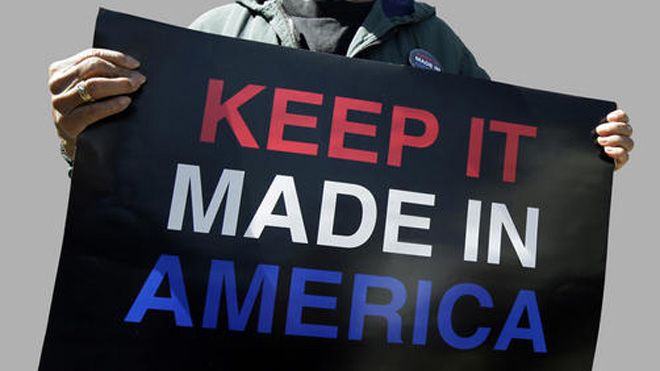With a growing number of businesses taking their jobs overseas, more and more Americans consumers want to buck the growing trend by only buying products made in the good, old USA.
This trend prompted Margarita Mendoza to launch the “Made in America Movement,” a nonprofit organization that raises awareness about the benefits of buying local. The group promotes businesses that keep their jobs in the U.S. and encourages consumers to buy made-in-the-USA products.
“A lot of manufacturers are starting to realize how much they can save by coming back and manufacturing in the U.S.,” Mendoza said.
This year, in particular, the movement is looking to “help and inspire” the Latino community.
Mendoza hopes that with this movement more manufacturing jobs and opportunities will be made available to Latinos and Americans as a whole, while also showcasing Latino businesses that have made domestic production a priority.
While this initiative began as a “mini movement,” the trend has now gained international support. Mendoza said she hopes it can create jobs for future generations.
A growing number of businesses have started jumping on the “Made in America” trend.
Earlier this month, Walmart said it would commit to producing and carrying $50 billion worth of made-in-America products over the next 10 years, said spokesman Randy Hargrove.
Nationally, there is an overwhelming preference among Americans to buy goods manufactured locally, according to the first part of an ongoing study by the Boston Consulting Group entitled “Made in America, Again.”
entitled “Made in America, Again.”
The study, which collected data from 5,000 respondents in the U.S., China, France and Germany, found that approximately 65 percent of Americans prefer to buy products made domestically.
Along with elements of patriotism, Americans see goods made stateside as having a certain status symbol and a perceived superior quality.
The value of the “Made in the USA” logo translates so far that consumers are even willing to shell out more cash, the study says. About 80 percent of American consumers are willing to pay a premium for products made in the U.S.
While manufacturing in countries like China is still more cost-effective, new evidence shows that as early as in 2015 manufacturing in many parts of the U.S. will be just as cost-effective as producing abroad. By Kacy Capobres [Fox]


